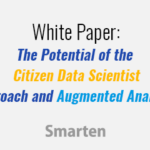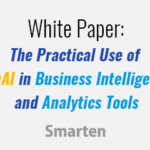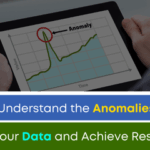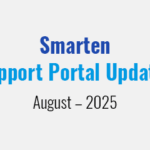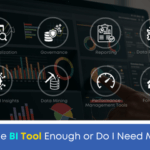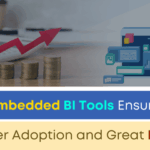What is Natural Language Processing and Why Do I Need it in My Advanced Analytics Solution?
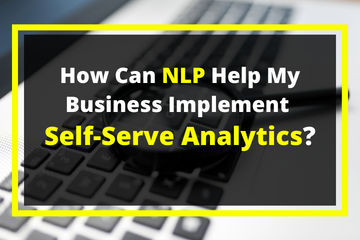
What is Natural Language Processing (NLP)?
Natural Language Processing utilizes artificial intelligence to translate computer code and language into real world, human language. While the goal is to simplify human interaction with computers, NLP is a complex mix of computational linguistics and computer science. When a business is considering an augmented analytics solution that leverages natural language processing, it need not concern itself with the complicated underpinning of code and design, but should rather consider what NLP can do for its users and for its business results.
Gartner predicts that, ‘By 2023, enterprises will have doubled their current spending on natural-language-technology-based solutions’, and there is good reason for that investment.
‘When a business contemplates the deployment of an advanced analytics solution to support its goals for business agility, data literacy and competitive advantage, it is wise to select an augmented analytics solution that includes natural language processing (NLP).’
To remain competitive in an ever-changing market, with ever-changing customer buying behavior, the average business (whether local or global) must understand its clients, its market, its competitors and the trends that will change all of these factors in the near future. Team members are prized for their professional knowledge and skill but, in the past, were never part of the analytical picture. When a business needed to understand what was happening, it would turn to its business analysts, data scientists or IT team members to gather data from disparate enterprise systems and analyze that data, in hopes of answering questions.
Augmented Analytics solutions that include the Natural Language Processing approach, allow businesses to provide a solution that is appropriate for all users, no matter their technical skills.
The Benefits of NLP include:
- NLP search allows business users to create complex searches without endless clicks and complex navigation and commands.
- Familiar Google-type search analytics allow users to access and view clear, concise answers and analysis quickly and easily.
- Users can compose and enter a question using common human language, e.g., ‘who sold the most bakery products in 2017 in the Southwest region?’
- Users do not need to scroll through menus and navigation, they can simply enter a search query in or descriptions.
- NLP clickless analytics leverages machine learning and NLP in a self-serve environment that is easy enough for every business user.
- Businesses enjoy improved democratization and return on investment (ROI).
- When business users can ask a question, using normal language and get a response that they can immediately understand, they are more likely to adopt the tools and use them in a way that will help the business to achieve its goals and objectives.
- No advanced training is required.
‘Gartner predicts that, ‘By 2023, enterprises will have doubled their current spending on natural-language-technology-based solutions’, and there is good reason for that investment.’
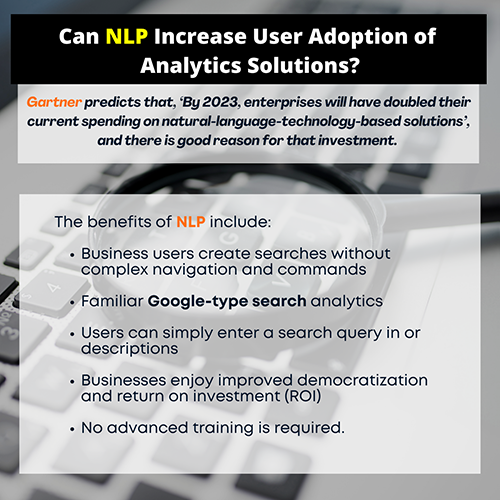
When a business contemplates the deployment of an advanced analytics solution to support its goals for business agility, data literacy and competitive advantage, it is wise to select an augmented analytics solution; one that is designed to support business users, and one that includes natural language processing (NLP). All the data in the world is not helpful if users and businesses cannot easily find those all-important nuggets of information that will help them with a pricing decision, a marketing campaign, an investment, an HR planning issue or any other crucial business issue.
NLP creates an environment where humans can interact with data to test theories, ask questions and discover critical information easily and quickly.
Explore the advantages of Natural Language Processing (NLP), Clickless Analytics and simplified search analytics, and find out how this approach to augmented analytics can support your goals and objectives.



